Experimental Analysis of the Stress State of a Prestressed Cylindrical Shell with Various Structural Parameters
Abstract
1. Introduction
2. Materials and Methods
- Diameter and thickness of the cylindrical shell;
- Pitch, angle and winding force of the wrapping thread, diameter of the wrapping wire.
3. Results and Discussion
4. Conclusions
Author Contributions
Funding
Institutional Review Board Statement
Informed Consent Statement
Data Availability Statement
Acknowledgments
Conflicts of Interest
References
- Available online: https://uralneftemash.com/blog/prichiny-razrushenij-i-vzryvov-rezervuarov/ (accessed on 5 June 2022).
- Available online: https://www.himstalcon.ru/articles/razrusheniya-v-protsesse-ekspluatatsii-vertikalnyih-tsilindricheskih-rezervuarov-so-statsionarnoy-kryishey (accessed on 5 June 2022).
- Lai, E.; Zhao, J.; Li, X.; Hu, K.; Chen, G. Dynamic responses and damage of storage tanks under the coupling effect of blast wave and fragment impact. J. Loss Prev. Process Ind. 2021, 73, 104617. [Google Scholar] [CrossRef]
- Zhang, M.; Zheng, F.; Chen, F.; Pan, W.; Mo, S. Propagation probability of domino effect based on analysis of accident chain in storage tank area. J. Loss Prev. Process Ind. 2019, 62, 103962. [Google Scholar] [CrossRef]
- Krentowski, J.; Ziminski, K. Consequences of an incorrect assessment of a structure damaged by explosion. Eng. Fail. Anal. 2019, 101, 135–144. [Google Scholar] [CrossRef]
- Suleimenov, U.; Zhangabay, N.; Utelbayeva, A.; Ibrahim, M.N.M.; Moldagaliyev, A.; Abshenov, K.; Buganova, S.; Daurbekova, S.; Ibragimova, Z.; Dosmakanbetova, A. Determining the features of oscillations in prestressed pipelines. East.-Eur. J. Enterp. Technol. 2021, 6, 85–92. [Google Scholar] [CrossRef]
- Suleimenov, U.; Zhangabay, N.; Utelbayeva, A.; Azmi Murad, M.A.; Dosmakanbetova, A.; Abshenov, K.; Buganova, S.; Moldagaliyev, A.; Imanaliyev, K.; Duissenbekov, B. Estimation of the strength of vertical cylindrical liquid storage tanks with dents in the wall. East.-Eur. J. Enterp. Technol. 2022, 7, 6–20. [Google Scholar] [CrossRef]
- Tursunkululy, T.; Zhangabay, N.; Avramov, K.; Chernobryvko, M.; Suleimenov, U.; Utelbayeva, A.; Duissenbekov, B.; Aikozov, Y.; Dauitbek, B.; Abdimanat, Z. Strength analysis of prestressed vertical cylindrical steel oil tanks under operational and dynamic loads. East.-Eur. J. Enterp. Technol. 2022, 7, 14–21. [Google Scholar] [CrossRef]
- Fan, Y.; Hunt, J.; Wang, Q.; Yin, S.; Li, Y. Water tank modelling of variations in inversion breakup over a circular city. Build. Environ. 2019, 164, 106342. [Google Scholar] [CrossRef]
- Martynenko, G.; Avramov, K.; Martynenko, V.; Chernobryvko, M.; Tonkonozhenko, A.; Kozharin, V. Numerical simulation of warhead transportation. Def. Technol. 2021, 17, 478–494. [Google Scholar] [CrossRef]
- Fomin, O.; Lovska, A.; Melnychenko, O.; Shpylovyi, I.; Masliyev, V.; Bambura, O.; Klymenko, M. Determination of dynamic load features of tank containers when transported by rail ferry. East.-Eur. J. Enterp. Technol. 2019, 5, 19–26. [Google Scholar] [CrossRef]
- Wang, Z.; Hu, K.; Zhao, Y. Doom-roof steel tanks under external explosion: Dynamic responses and anti-explosion measures. J. Constr. Steel Res. 2022, 190, 107118. [Google Scholar] [CrossRef]
- Rastgar, M.; Showkati, H. Buckling behavior of cylindrical steel tanks with concavity of vertical weld line imperfection. J. Constr. Steel Res. 2018, 145, 289–299. [Google Scholar] [CrossRef]
- Duissenbekov, B.; Tokmuratov, A.; Zhangabay, N.; Yerimbetov, B.; Aldiyarov, Z. Finite-difference equations of quasistatic motion of the shallow concrete shells in nonlinear setting. Curved Layer. Struct. 2020, 7, 48–55. [Google Scholar] [CrossRef]
- Alavinasab, A.; Padewski, E., III; Holley, M.; Jha, R.; Ahmadi, G. Damage identification based on vibration response of prestressed concrete pipes. In Pipelines 2010: Climbing New Peaks to Infrastructure Reliability: Renew, Rehab, and Reinvest; ASCE Library: Reston, VA, USA, 2010; pp. 909–919. [Google Scholar] [CrossRef]
- Bakhtiari-Nejad, F.; Bideleh, S.M. Nonlinear free vibration analysis of prestressed circular cylindrical shells on the Winkler/Pasternak foundation. Thin Walled Struct. 2012, 53, 26–39. [Google Scholar] [CrossRef]
- Suleimenov, U.; Zhangabay, N.; Abshenov, K.; Utelbayeva, A.; Imanaliyev, K.; Mussayeva, S.; Moldagaliyev, A.; Yermakhanov, M.; Raikhanova, G. Estimating the stressed-strained state of the vertical mounting joint of the cylindrical tank wall taking into consideration imperfections. East.-Eur. J. Enterp. Technol. 2022, 3, 14–21. [Google Scholar] [CrossRef]
- Ramesh, S. Hazards and Threats to a Pipeline System. In Pipeline Integrity Handbook, 2nd ed.; Elsevier: Amsterdam, The Netherlands, 2017; pp. 35–88. [Google Scholar] [CrossRef]
- GOST 27069-86. Metallographic Analysis of Metals. Available online: https://internet-law.ru/gosts/gost/19952/ (accessed on 5 June 2022).
- GOST 16523-70. The Sheet Is Thin. Available online: https://lador.ru/gost/gost-16523-70.pdf (accessed on 5 June 2022).
- GOST 5663-79. Wire. Available online: https://www.optprommetiz.ru/GOSTI_PDF/gost_5663-79.pdf (accessed on 5 June 2022).
- Zhangabay, N.; Utelbayeva, A.; Oner, A.; Tursunkulyly, T.; Khassankhodjayeva, B. Critical pressure on oil and gas pipelines operating under internal pressure. Neft Gas 2020, 6, 119–126. [Google Scholar] [CrossRef]
- Bondarenko, V.P.; Nadirov, K.S.; Golubev, V.G.; Kolesnikov, A.S. Study of a reagent-emulsifier for the preparation of reverse water-oil emulsions used for well-killing. Neft. Khozyaystvo Oil Ind. 2017, 1, 58–60. (In Russian) [Google Scholar]
- Kolesnikov, A.S.; Zhanikulov, N.N.; Zhakipbayev, B.Y.; Kolesnikova, O.G.; Kuraev, R.M. Thermodynamic modeling of the synthesis of the main minerals of cement clinker from technogenic raw materials. Complex Use Miner. Resour. 2021, 318, 24–34. [Google Scholar] [CrossRef]
- Zhakipbaev, B.Y.; Zhanikulov, N.N.; Kuraev, R.M.; Shal, A.L. Review of technogenic waste and methods of its processing for the purpose of complex utilization of tailings from the enrichment of non-ferrous metal ores as a component of the raw material mixture in the production of cement clinker. Rasayan J. Chem. 2021, 14, 997–1005. [Google Scholar] [CrossRef]
- Naraev, V.N.; Natorkhin, M.I.; Saipov, A.A.; Kolesnikova, O.G. Review of the processing of minerals and technogenic sulfide raw material with the extraction of metals and recovering elemental sulfur by electrochemical methods. Rasayan J. Chem. 2020, 13, 2420–2428. [Google Scholar] [CrossRef]
- Lukpanov, R.E.; Dyussembinov, D.S.; Utepov, Y.B.; Bazarbayev, D.O.; Tsygulyov, D.V.; Yenkebayev, S.B.; Shakhmov, Z.A. Homogeneous pore distribution in foam concrete by two-stage foaming. Mag. Civ. Eng. 2021, 3, 10313. [Google Scholar] [CrossRef]
- Kolesnikov, A.S.; Sergeeva, I.V.; Botabaev, N.E.; Al’Zhanova, A.Z.; Ashirbaev, K.A. Thermodynamic simulation of chemical and phase transformations in the system of oxidized manganese ore—Carbon. Izv. Ferr. Metall. 2017, 60, 759–765. [Google Scholar] [CrossRef][Green Version]
- Andrianov, I.K. Rod-Based Model for Optimization of a Polymer Die with Self-Heating in Cyclic Loading. Russ. Eng. Res. 2021, 41, 403–406. [Google Scholar] [CrossRef]
- Kolesnikov, A.; Fediuk, R.; Amran, M.; Klyuev, S.; Klyuev, A.; Volokitina, I.; Naukenova, A.; Shapalov, S.; Utelbayeva, A.; Kolesnikova, O.; et al. Modeling of Non-Ferrous Metallurgy Waste Disposal with the Production of Iron Silicides and Zinc Distillation. Materials 2022, 15, 2542. [Google Scholar] [CrossRef] [PubMed]
- Lukpanov, R.; Dyusembinov, D.; Shakhmov, Z.; Tsygulov, D.; Aibuldinov, Y.; Vatin, N.I. Impregnating Compound for Cement-Concrete Road Pavement. Crystals 2022, 12, 161. [Google Scholar] [CrossRef]
- Volokitina, I.; Kolesnikov, A.; Fediuk, R.; Klyuev, S.; Sabitov, L.; Volokitin, A.; Zhuniskaliyev, T.; Kelamanov, B.; Yessengaliev, D.; Yerzhanov, A.; et al. Study of the Properties of Antifriction Rings under Severe Plastic Deformation. Materials 2022, 15, 2584. [Google Scholar] [CrossRef]
- Kolesnikov, A.; Fediuk, R.; Kolesnikova, O.; Zhanikulov, N.; Zhakipbayev, B.; Kuraev, R.; Akhmetova, E.; Shal, A. Processing of waste from enrichment with the production of cement clinker and the extraction of zinc. Materials 2022, 15, 324. [Google Scholar] [CrossRef]
- Vasilyeva, N.; Fedorova, E.; Kolesnikov, A. Big Data as a Tool for Building a Predictive Model of Mill Roll Wear. Symmetry 2021, 13, 859. [Google Scholar] [CrossRef]
- Volokitina, I.; Siziakova, E.; Fediuk, R.; Kolesnikov, A. Development of a Thermomechanical Treatment Mode for Stainless-Steel Rings. Materials 2022, 15, 4930. [Google Scholar] [CrossRef]
- Vasilyeva, N.V.; Boikov, A.V.; Erokhina, O.O.; Trifonov, A.Y. Automated digitization of radial charts. J. Min. Inst. 2021, 247, 82–87. [Google Scholar] [CrossRef]
- Kolesnikov, A.S.; Serikbaev, B.E.; Zolkin, A.L.; Kenzhibaeva, G.S.; Isaev, G.I.; Botabaev, N.E.; Shapalov, S.K.; Kolesnikova, O.G.; Iztleuov, G.M.; Suigenbayeva, A.Z.; et al. Processing of Non-Ferrous Metallurgy Waste Slag for its Complex Recovery as a Secondary Mineral Raw Material. Refract. Ind. Ceram. 2021, 62, 375–380. [Google Scholar] [CrossRef]
- Andrianov, I.K.; Grinkrug, M.S.; Vakuluk, A.A. Numerical calculation of the heat sink parameters of the shell turbine vanes at the modeling of the heat-protective coating with a different number of layers. In Current Problems and Ways of Industry Development: Equipment and Technologies; Springer: Cham, Switzerland, 2021; Volume 200, pp. 37–46. [Google Scholar] [CrossRef]
- Kuatbay, Y.; Nurumgaliyev, A.; Shabanov, Y.; Zayakin, O.; Gabdullin, S.; Zhuniskaliyev, T. Melting of high-carbon ferrochrome using coal of the saryadyr deposit. Metalurgija 2022, 61, 367–370. [Google Scholar]
- Volokitina, I.E.; Kurapov, G.G. Effect of Initial Structural State on Formation of Structure and Mechanical Properties of Steels Under ECAP. Met. Sci. Heat Treat. 2018, 59, 786–792. [Google Scholar] [CrossRef]
- Volokitin, A.; Naizabekov, A.; Volokitina, I.; Kolesnikov, A. Changes in microstructure and properties of austenitic steel aisi 316 during high-pressure torsion. J. Chem. Technol. Metall. 2022, 57, 809–815. [Google Scholar]
- Boikov, A.; Payor, V.; Savelev, R.; Kolesnikov, A. Synthetic data generation for steel defect detection and classification using deep learning. Symmetry 2021, 13, 1176. [Google Scholar] [CrossRef]
- Andrianov, I.K. Modification of the stamp topological optimization taking into account cyclic fatigue based on the finite element approach. Int. J. Mech. 2021, 15, 145–150. [Google Scholar] [CrossRef]
- Fediuk, R.S.; Lesovik, V.S.; Mochalov, A.V.; Otsokov, K.A.; Lashina, I.V.; Timokhin, R.A. Composite binders for concrete of protective structures. Mag. Civ. Eng. 2018, 82, 208–218. [Google Scholar]
- Zhangabay, N.; Utelbayeva, A. Cylindrical Shell for Storage and Transportation Liquids and Hydrocarbons. Patent for Utility Model 6208, 2 July 2021. Available online: https://gosreestr.kazpatent.kz (accessed on 5 June 2022).
- Li, Z.; Song, B.; Li, D. Safety Risk Recognition Method Based on Abnormal Scenarios. Buildings 2022, 12, 562. [Google Scholar] [CrossRef]
- Thongchom, C.; Jearsiripongkul, T.; Refahati, N.; Roudgar Saffari, P.; Roodgar Saffari, P.; Sirimontree, S.; Keawsawasvong, S. Sound Transmission Loss of a Honeycomb Sandwich Cylindrical Shell with Functionally Graded Porous Layers. Buildings 2022, 12, 151. [Google Scholar] [CrossRef]
- Kou, S.; Zhang, X.; Li, W.; Song, C. Dynamic Response Parameter Analysis of Steel Frame Joints under Blast Loading. Buildings 2022, 12, 433. [Google Scholar] [CrossRef]
- Wang, J.; Kusunoki, K. Study on the Flexural Strength of Interior Thick Wall-Thick Slab Joints Subjected to Lateral Force Using Finite-Element Analysis. Buildings 2022, 12, 535. [Google Scholar] [CrossRef]
- Jabir, H.A.; Abid, S.R.; Murali, G.; Ali, S.H.; Klyuev, S.; Fediuk, R.; Vatin, N.; Promakhov, V.; Vasilev, Y. Experimental Tests and Reliability Analysis of the Cracking Impact Resistance of UHPFRC. Fibers 2020, 8, 74. [Google Scholar] [CrossRef]
- Lesovik, V.S. The reducing effect of argon in the plasma treatment of high-melting nonmetallic materials (A review). Glass Ceram. 2001, 58, 362–364. [Google Scholar]
- Fediuk, R.; Timokhin, R.; Mochalov, A.; Otsokov, K.; Lashina, I. Performance properties of high-density impermeable cementitious paste. J. Mater. Civ. Eng. 2019, 31, 04019013. [Google Scholar] [CrossRef]
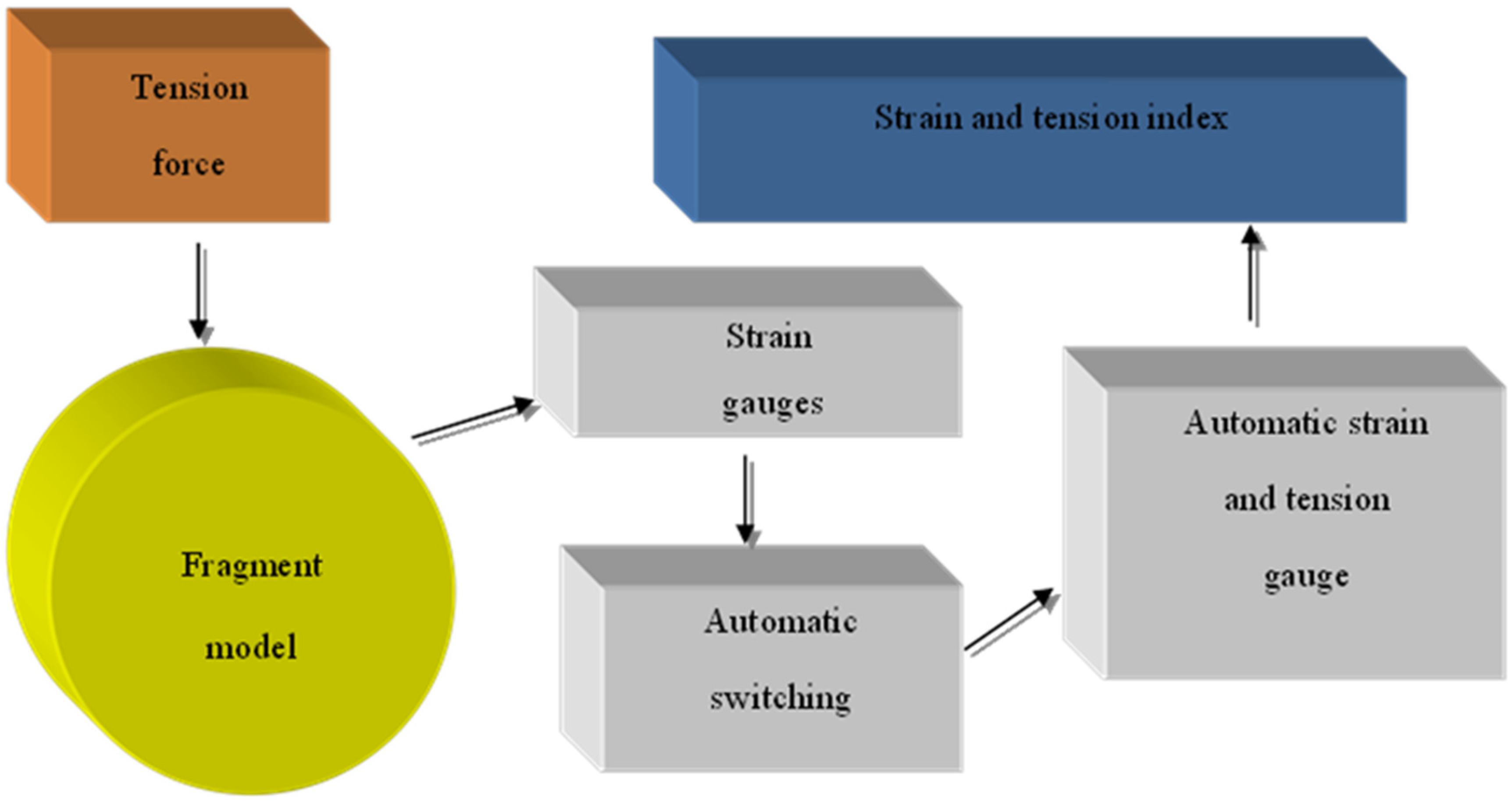
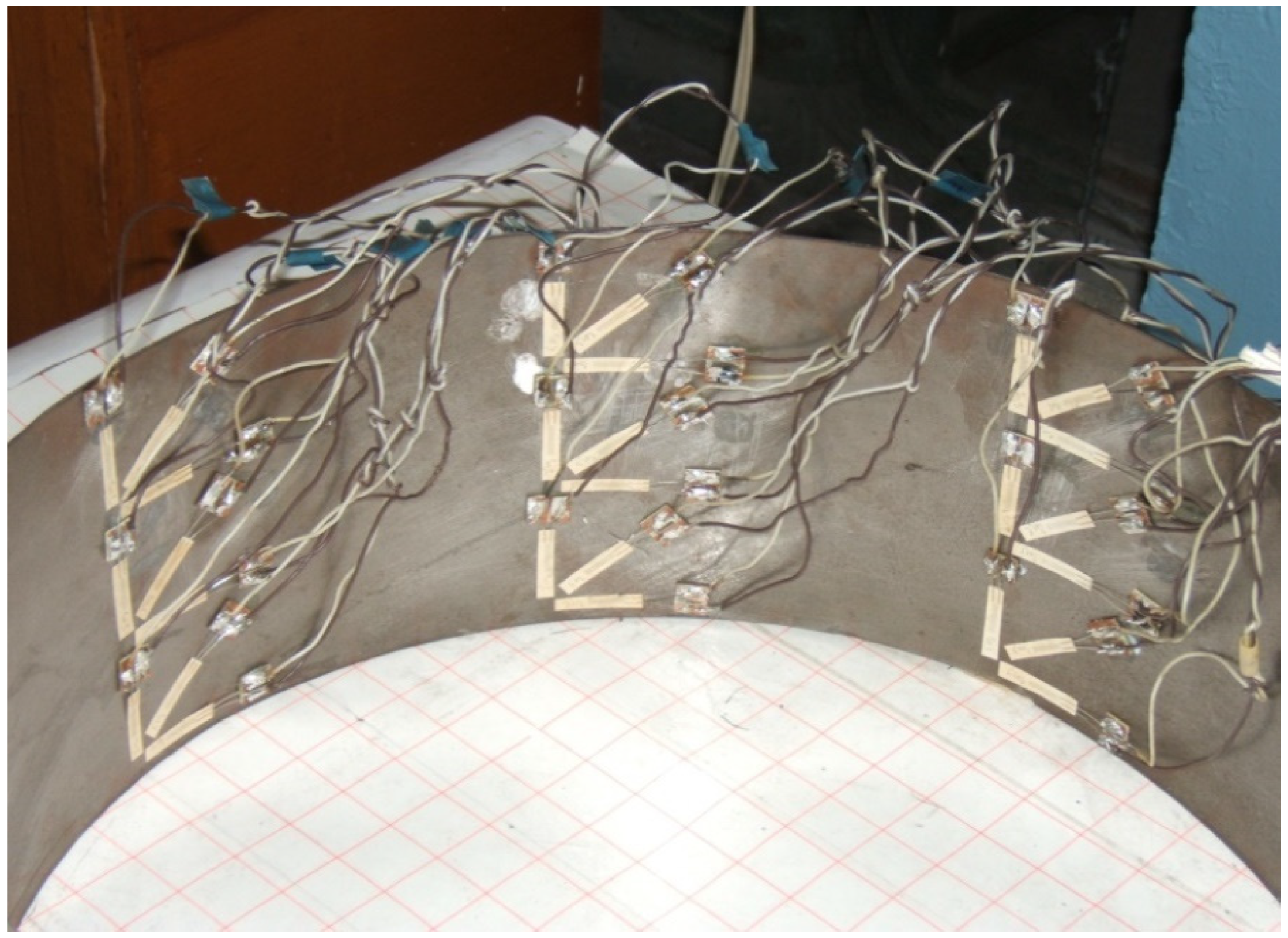
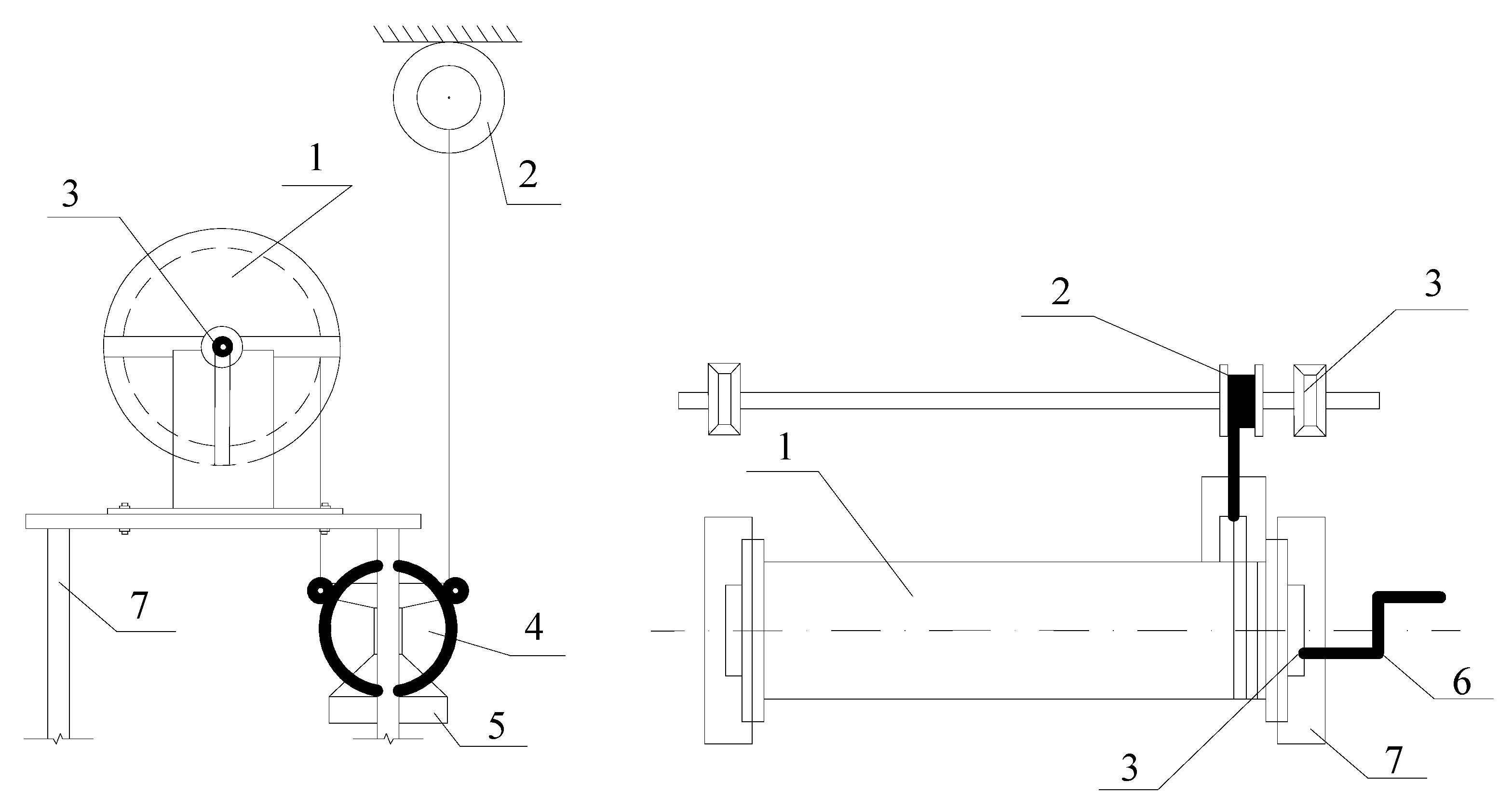
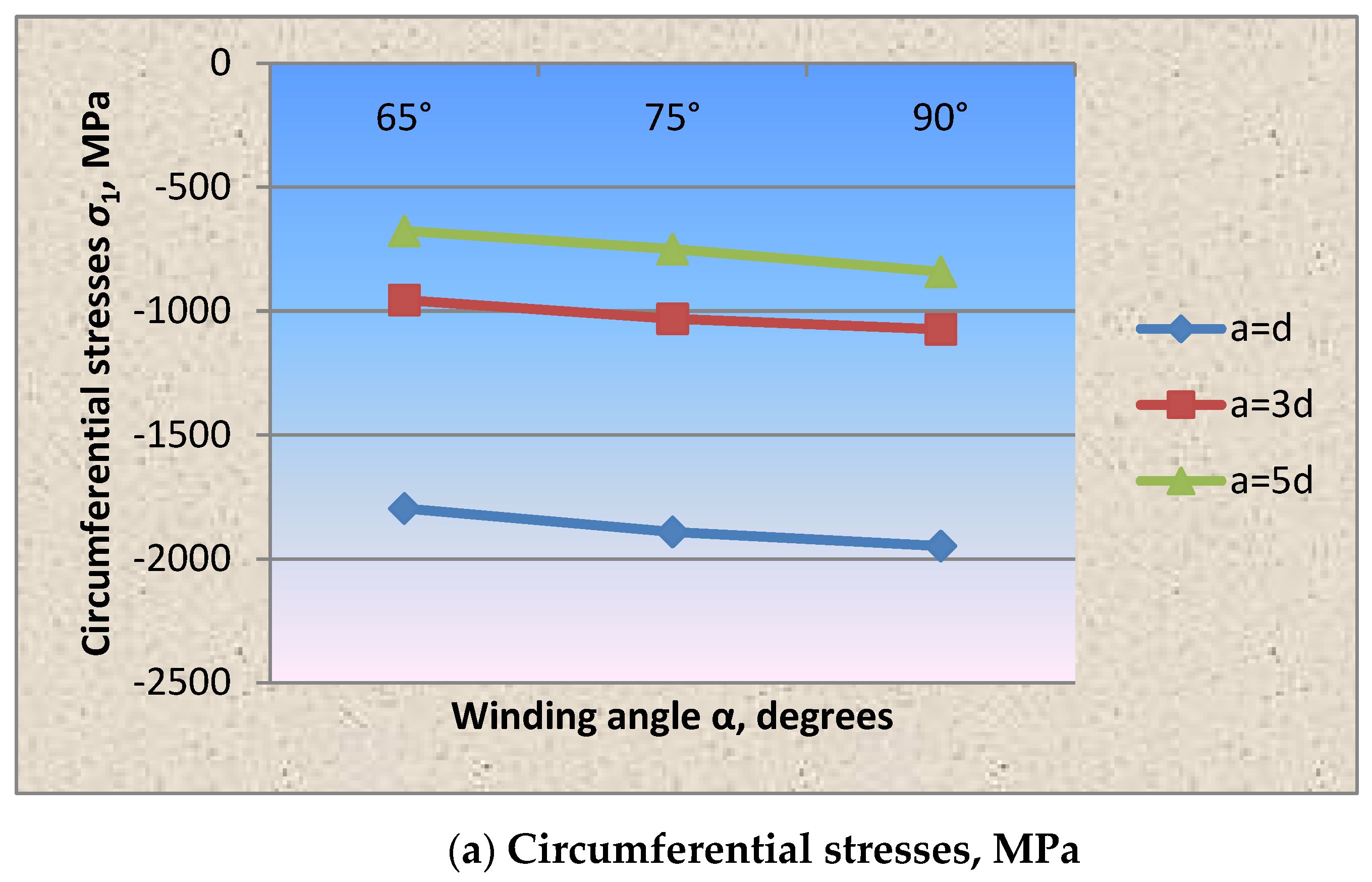
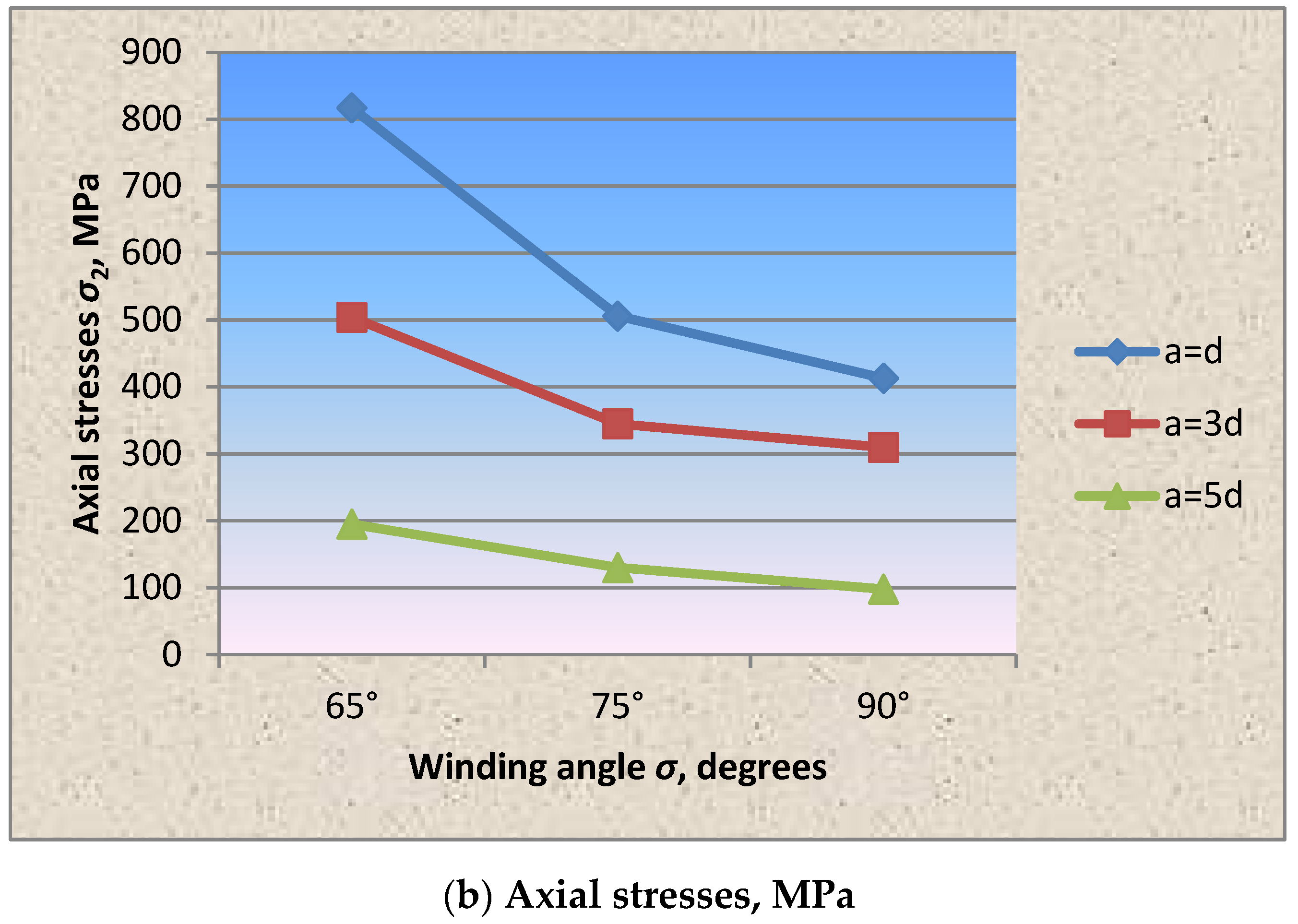

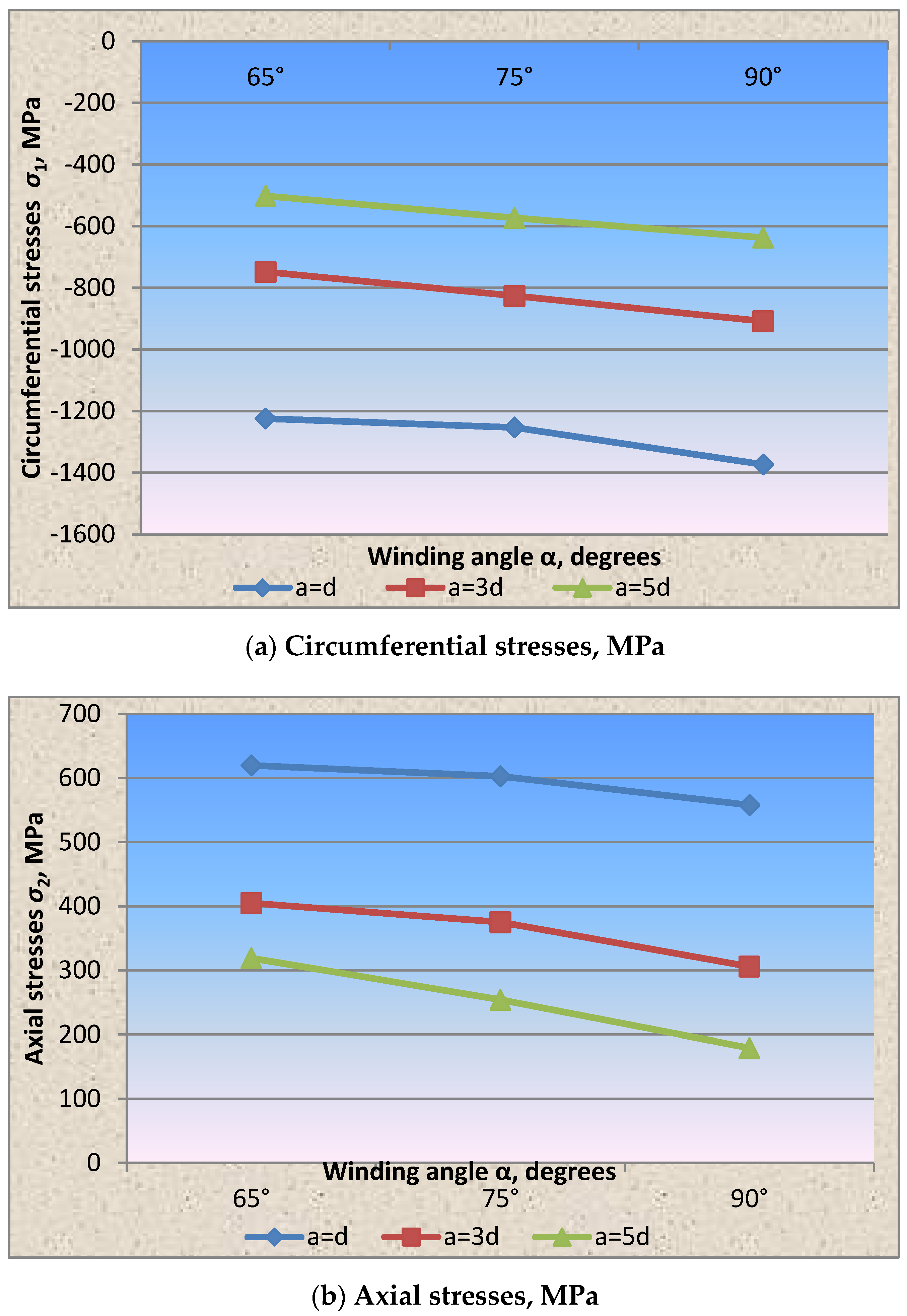
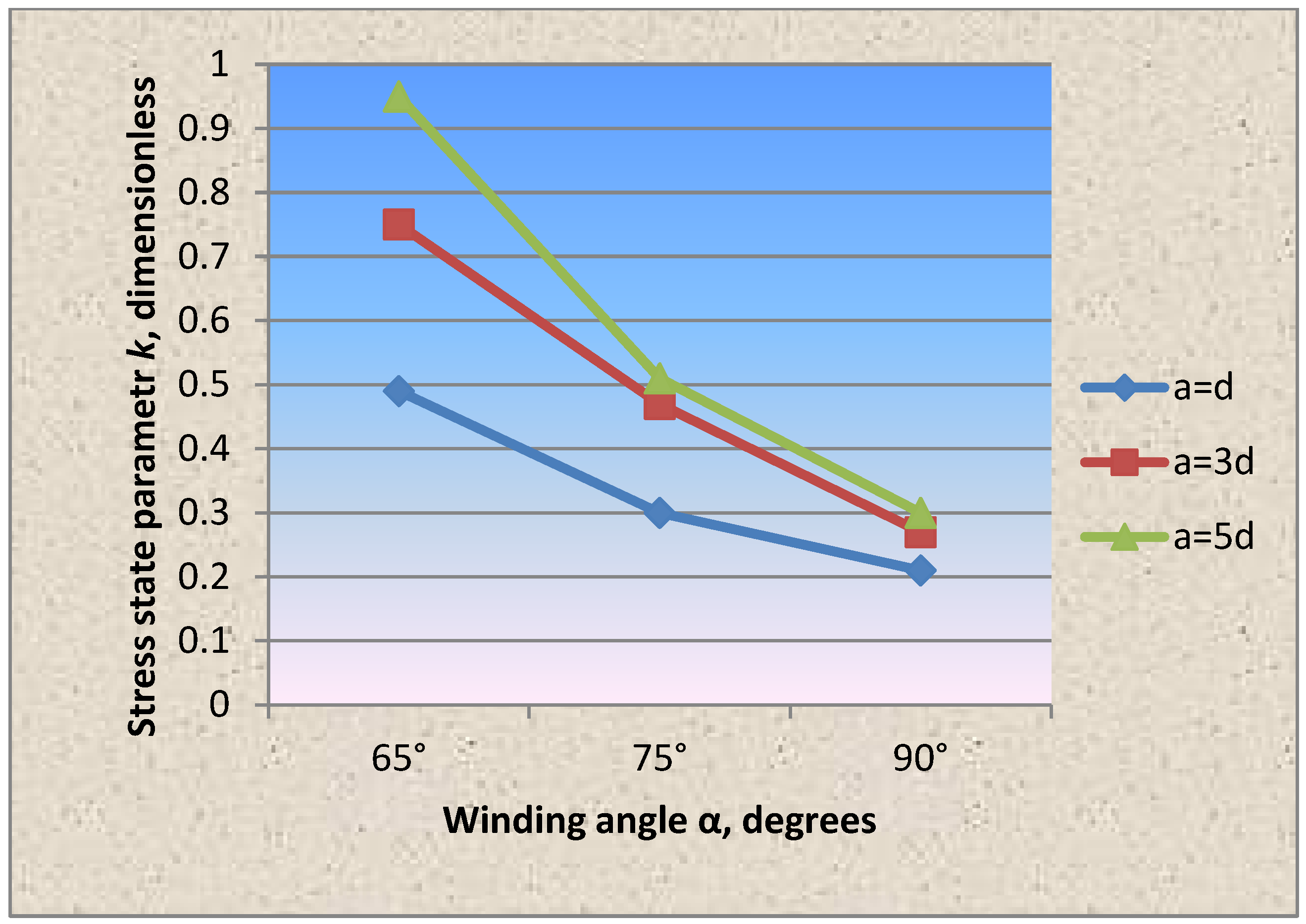
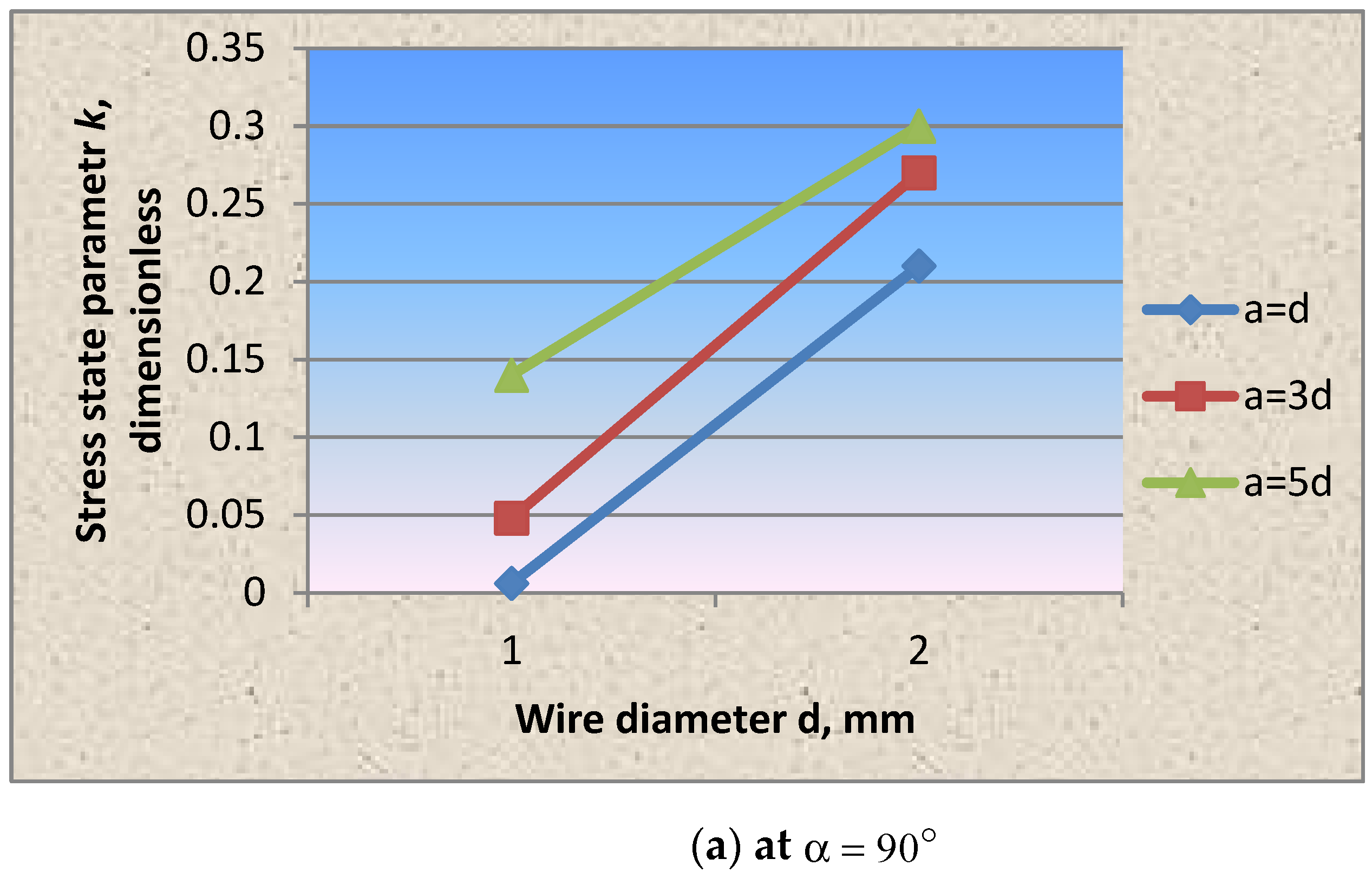
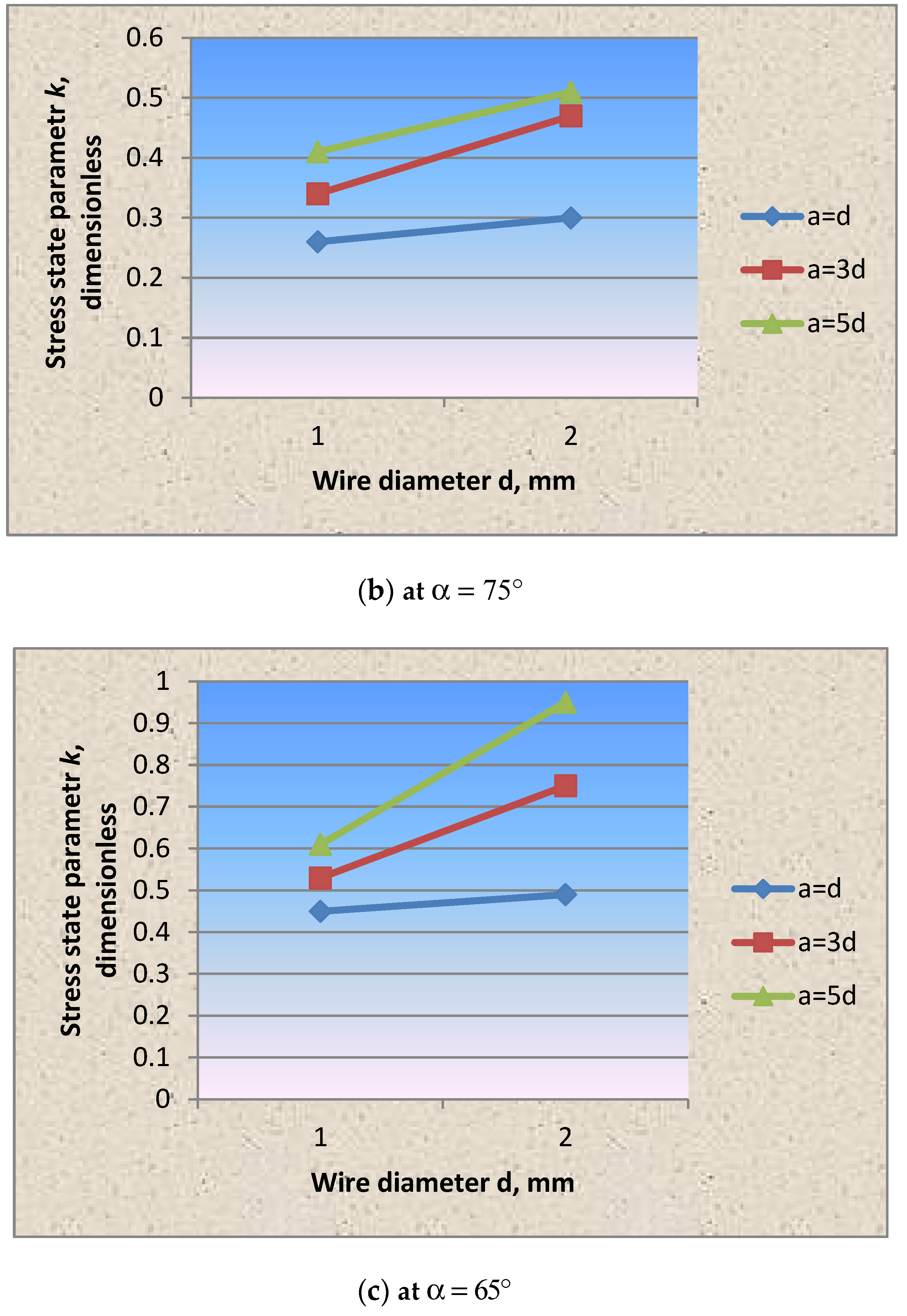
| Stages | Sub-Stages | Series | Number of Fragments, Unit | Diameter/Thickness of Full-Scale Shell, mm | Modeling Method | Shell Fragment Diameter, mm | Shell Fragment Wall Thickness, mm | Winding Wire Diameter, mm | Wire Pitch | Winding Angle, Degrees |
|---|---|---|---|---|---|---|---|---|---|---|
| 1 | 2 | 3 | 4 | 5 | 6 | 7 | 8 | 9 | 10 | 11 |
| I | I-A | I-A-1/1 * | 2 | 720/5.0 | affine | 360 | 0.5 | 1.0/2.0 | d | 90 |
| I-A-2/2 * | 2 | 720/5.0 | affine | 360 | 0.5 | 1.0/2.0 | 3d | 90 | ||
| I-A-3/3 * | 2 | 720/5.0 | affine | 360 | 0.5 | 1.0/2.0 | 5d | 90 | ||
| I-A-4/4 * | 2 | 720/5.0 | affine | 360 | 0.5 | 1.0/2.0 | d | 75 | ||
| I-A-5/5 * | 2 | 720/5.0 | affine | 360 | 0.5 | 1.0/2.0 | 3d | 75 | ||
| I-A-6/6 * | 2 | 720/5.0 | affine | 360 | 0.5 | 1.0/2.0 | 5d | 75 | ||
| I-A-7/7 * | 2 | 720/5.0 | affine | 360 | 0.5 | 1.0/2.0 | d | 65 | ||
| I-A-8/8 * | 2 | 720/5.0 | affine | 360 | 0.5 | 1.0/2.0 | 3d | 65 | ||
| I-A-9/9 * | 2 | 720/5.0 | affine | 360 | 0.5 | 1.0/2.0 | 5d | 65 | ||
| I-B | I-B-1/1 * | 2 | 720/6.0 | affine | 360 | 0.6 | 1.0/2.0 | d | 90 | |
| I-B-2/2 * | 2 | 720/6.0 | affine | 360 | 0.6 | 1.0/2.0 | 3d | 90 | ||
| I-B-3/3 * | 2 | 720/6.0 | affine | 360 | 0.6 | 1.0/2.0 | 5d | 90 | ||
| I-B-4/4 * | 2 | 720/6.0 | affine | 360 | 0.6 | 1.0/2.0 | d | 75 | ||
| I-B-5/5 * | 2 | 720/6.0 | affine | 360 | 0.6 | 1.0/2.0 | 3d | 75 | ||
| I-B-6/6 * | 2 | 720/6.0 | affine | 360 | 0.6 | 1.0/2.0 | 5d | 75 | ||
| I-B-7/7 * | 2 | 720/6.0 | affine | 360 | 0.6 | 1.0/2.0 | d | 65 | ||
| I-B-8/8 * | 2 | 720/6.0 | affine | 360 | 0.6 | 1.0/2.0 | 3d | 65 | ||
| I-B-9/9 * | 2 | 720/6.0 | affine | 360 | 0.6 | 1.0/2.0 | 5d | 65 | ||
| II | II-A | II-A-1/1 * | 2 | 1020/6.0 | affine | 510 | 0.6 | 1.0/2.0 | d | 90 |
| II-A-2/2 * | 2 | 1020/6.0 | affine | 510 | 0.6 | 1.0/2.0 | 3d | 90 | ||
| IIA-3/3 * | 2 | 1020/6.0 | affine | 510 | 0.6 | 1.0/2.0 | 5d | 90 | ||
| II-A-4/4 * | 2 | 1020/6.0 | affine | 510 | 0.6 | 1.0/2.0 | d | 75 | ||
| II-A-5/5 * | 2 | 1020/6.0 | affine | 510 | 0.6 | 1.0/2.0 | 3d | 75 | ||
| II-A-6/6 * | 2 | 1020/6.0 | affine | 510 | 0.6 | 1.0/2.0 | 5d | 75 | ||
| II-A-7/7 * | 2 | 1020/6.0 | affine | 510 | 0.6 | 1.0/2.0 | d | 65 | ||
| II-A-8/8 * | 2 | 1020/6.0 | affine | 510 | 0.6 | 1.0/2.0 | 3d | 65 | ||
| II-A-9/9 * | 2 | 1020/6.0 | affine | 510 | 0.6 | 1.0/2.0 | 5d | 65 | ||
| II-B | II-B-1/1 * | 2 | 1020/7.0 | affine | 510 | 0.7 | 1.0/2.0 | d | 90 | |
| II-B-2/2 * | 2 | 1020/7.0 | affine | 510 | 0.7 | 1.0/2.0 | 3d | 90 | ||
| II-B-3/3 * | 2 | 1020/7.0 | affine | 510 | 0.7 | 1.0/2.0 | 5d | 90 | ||
| II-B-4/4 * | 2 | 1020/7.0 | affine | 510 | 0.7 | 1.0/2.0 | d | 75 | ||
| II-B-5/5 * | 2 | 1020/7.0 | affine | 510 | 0.7 | 1.0/2.0 | 3d | 75 | ||
| II-B-6/6 * | 2 | 1020/7.0 | affine | 510 | 0.7 | 1.0/2.0 | 5d | 75 | ||
| II-B-7/7 * | 2 | 1020/7.0 | affine | 510 | 0.7 | 1.0/2.0 | d | 65 | ||
| II-B-8/8 * | 2 | 1020/7.0 | affine | 510 | 0.7 | 1.0/2.0 | 3d | 65 | ||
| II-B-9/9 * | 2 | 1020/7.0 | affine | 510 | 0.7 | 1.0/2.0 | 5d | 65 | ||
| III | III-A | II-A-1/1 * | 2 | 1220/5.0 | direct | 122 | 0.5 | 1.0/2.0 | d | 90 |
| II-A-2/2 * | 2 | 1220/5.0 | direct | 122 | 0.5 | 1.0/2.0 | 3d | 90 | ||
| IIA-3/3 * | 2 | 1220/5.0 | direct | 122 | 0.5 | 1.0/2.0 | 5d | 90 | ||
| II-A-4/4 * | 2 | 1220/5.0 | direct | 122 | 0.5 | 1.0/2.0 | d | 75 | ||
| II-A-5/5 * | 2 | 1220/5.0 | direct | 122 | 0.5 | 1.0/2.0 | 3d | 75 | ||
| II-A-6/6 * | 2 | 1220/5.0 | direct | 122 | 0.5 | 1.0/2.0 | 5d | 75 | ||
| II-A-7/7 * | 2 | 1220/5.0 | direct | 122 | 0.5 | 1.0/2.0 | d | 65 | ||
| II-A-8/8 * | 2 | 1220/5.0 | direct | 122 | 0.5 | 1.0/2.0 | 3d | 65 | ||
| II-A-9/9 * | 2 | 1020/5.0 | direct | 122 | 0.5 | 1.0/2.0 | 5d | 65 |
| Series | Winding Angle, α | Experimental Values | Series | Winding Angle, α | Experimental Values | ||||
|---|---|---|---|---|---|---|---|---|---|
| Average | Average | Average | Average | ||||||
| I-A-1 | 90 | −1948 | 167 | 0.006 | II-A-5 * | 75 | −849 | 308 | 0.36 |
| I-A-1 * | 90 | −1373 | 319 | 0.21 | II-A-6 | 75 | −627 | 217 | 0.35 |
| I-A-2 | 90 | −1074 | 150 | 0.041 | II-A-6 * | 75 | −648 | 0383 | 0.60 |
| I-A-2 * | 90 | −908 | 254 | 0.27 | II-A-7 | 65 | −1658 | 802 | 0.48 |
| I-A-3 | 90 | −841 | 98 | 0.14 | II-A-7 * | 65 | 1204 | 644 | 0.54 |
| I-A-3 * | 90 | −637 | 179 | 0.30 | II-A-8 | 65 | −902 | 432 | 0.48 |
| I-A-4 | 75 | −1921 | 504 | 0.26 | II-A-8 * | 65 | −721 | 458 | 0.63 |
| I-A-4 * | 75 | −1253 | 386 | 0.3 | II-A-9 | 65 | −597 | 333 | 0.56 |
| I-A-5 | 75 | −1031 | 317 | 0.34 | II-A-9 * | 65 | −531 | 506 | 0.94 |
| I-A-5 * | 75 | −826 | 391 | 0.47 | II-B-1 | 90 | −1812 | 3.1 | 0.003 |
| I-A-6 | 75 | −750 | 310 | 0.41 | II-B-1 * | 90 | −1300 | 13.4 | 0.01 |
| I-A-6 * | 75 | −573 | 306 | 0,51 | II-B-2 | 90 | −887 | 20.8 | 0.023 |
| I-A-7 | 65 | −1796 | 817 | 0.45 | II-B-2 * | 90 | −776 | 76 | 0.09 |
| I-A-7 * | 65 | −1224 | 602 | 0.49 | II-B-3 | 90 | −678 | 40 | 0.06 |
| I-A-8 | 65 | −955 | 506 | 0.53 | II-B-3 * | 90 | −511 | 154 | 0.3 |
| I-A-8 * | 65 | −748 | 603 | 0.75 | II-B-4 | 75 | −1712 | 480 | 0.28 |
| I-A-9 | 65 | −676 | 413 | 0.61 | II-B-4 * | 75 | −1210 | 394 | 0.32 |
| I-A-9 * | 65 | −502 | 558 | 0.95 | II-B-5 | 75 | −809 | 245 | 0.3 |
| I-B-1 | 90 | −1943 | 11.5 | 0.005 | II-B-5 * | 75 | −711 | 333 | 0.47 |
| I-B-1 * | 90 | −1348 | 26 | 0.019 | II-B-6 | 75 | −510 | 227 | 0.44 |
| I-B-2 | 90 | −1163 | 44 | 0.039 | II-B-6 * | 75 | −475 | 335 | 0.7 |
| I-B-2 * | 90 | −845 | 142 | 0.16 | II-B-7 | 65 | −1566 | 717 | 0.45 |
| I-B-3 | 90 | −687 | 75 | 0.1 | II-B-7 * | 65 | −1092 | 634 | 0.58 |
| I-B-3 * | 90 | −565 | 313 | 0.55 | II-B-8 | 65 | −748 | 431 | 0.57 |
| I-B-4 | 75 | −1823 | 511 | 0.28 | II-B-8 * | 65 | −665 | 405 | 0.6 |
| I-B-4 * | 75 | −1180 | 426 | 0.36 | II-B-9 | 65 | −493 | 284 | 0.58 |
| I-B-5 | 75 | −929 | 300 | 0.32 | II-B-9 * | 65 | −434 | 432 | 0.99 |
| I-B-5 * | 75 | −857 | 319 | 0.38 | III-A-1 | 90 | 1994 | 31 | 0.015 |
| I-B-6 | 75 | −634 | 252 | 0.39 | III-A-1 * | 90 | −1352 | 87 | 0.06 |
| I-B-6 * | 75 | −610 | 490 | 0.81 | III-A-2 | 90 | −1354 | 179 | 0.13 |
| I-B-7 | 65 | −1710 | 823 | 0.48 | III-A-2 * | 90 | −707 | 403 | 0.57 |
| I-B-7 * | 65 | −1197 | 591 | 0.49 | III-A-3 | 90 | −384 | 302 | 0.44 |
| I-B-8 | 65 | −1008 | 499 | 0.49 | III-A-3 * | 90 | −650 | 531 | 0.81 |
| I-B-8 * | 65 | −771 | 535 | 0.64 | III-A-4 | 75 | −1853 | 512 | 0.3 |
| I-B-9 | 65 | −589 | 366 | 0.62 | III-A-4 * | 75 | −1296 | 433 | 0.33 |
| I-B-9 * | 65 | −491 | 632 | 1.21 | III-A-5 | 75 | −1003 | 445 | 0.44 |
| II-A-1 | 90 | −1841 | 6.9 | 0.004 | III-A-5 * | 75 | −630 | 609 | 0.96 |
| II-A-1 * | 90 | −1573 | 17.5 | 0.01 | III-A-6 | 75 | −650 | 507 | 0.78 |
| II-A-2 | 90 | −960 | 28 | 0.028 | III-A-6 * | 75 | −608 | 779 | 1.28 |
| II-A-2 * | 90 | −809 | 118 | 0.14 | III-A-7 | 65 | −1823 | 654 | 0.36 |
| II-A-3 | 90 | −627 | 52 | 0.08 | III-A-7 * | 65 | −1183 | 684 | 0.57 |
| II-A-3 * | 90 | −695 | 217 | 0.31 | III-A-8 | 65 | −945 | 643 | 0.68 |
| II-A-4 | 75 | −1746 | 489 | 0.28 | III-A-8 * | 65 | −574 | 724 | 1.26 |
| II-A-4 * | 75 | 1307 | 377 | 0.29 | III-A-9 | 65 | −602 | 632 | 1.04 |
| II-A-5 | 75 | −919 | 285 | 0.30 | III-A-9 * | 65 | 598 | 875 | 1.46 |
Publisher’s Note: MDPI stays neutral with regard to jurisdictional claims in published maps and institutional affiliations. |
© 2022 by the authors. Licensee MDPI, Basel, Switzerland. This article is an open access article distributed under the terms and conditions of the Creative Commons Attribution (CC BY) license (https://creativecommons.org/licenses/by/4.0/).
Share and Cite
Zhangabay, N.; Sapargaliyeva, B.; Utelbayeva, A.; Kolesnikov, A.; Aldiyarov, Z.; Dossybekov, S.; Esimov, E.; Duissenbekov, B.; Fediuk, R.; Vatin, N.I.; et al. Experimental Analysis of the Stress State of a Prestressed Cylindrical Shell with Various Structural Parameters. Materials 2022, 15, 4996. https://doi.org/10.3390/ma15144996
Zhangabay N, Sapargaliyeva B, Utelbayeva A, Kolesnikov A, Aldiyarov Z, Dossybekov S, Esimov E, Duissenbekov B, Fediuk R, Vatin NI, et al. Experimental Analysis of the Stress State of a Prestressed Cylindrical Shell with Various Structural Parameters. Materials. 2022; 15(14):4996. https://doi.org/10.3390/ma15144996
Chicago/Turabian StyleZhangabay, Nurlan, Bayan Sapargaliyeva, Akmaral Utelbayeva, Alexandr Kolesnikov, Zhumadilla Aldiyarov, Serik Dossybekov, Esenbek Esimov, Bolat Duissenbekov, Roman Fediuk, Nikolai Ivanovich Vatin, and et al. 2022. "Experimental Analysis of the Stress State of a Prestressed Cylindrical Shell with Various Structural Parameters" Materials 15, no. 14: 4996. https://doi.org/10.3390/ma15144996
APA StyleZhangabay, N., Sapargaliyeva, B., Utelbayeva, A., Kolesnikov, A., Aldiyarov, Z., Dossybekov, S., Esimov, E., Duissenbekov, B., Fediuk, R., Vatin, N. I., Yermakhanov, M., & Mussayeva, S. (2022). Experimental Analysis of the Stress State of a Prestressed Cylindrical Shell with Various Structural Parameters. Materials, 15(14), 4996. https://doi.org/10.3390/ma15144996








